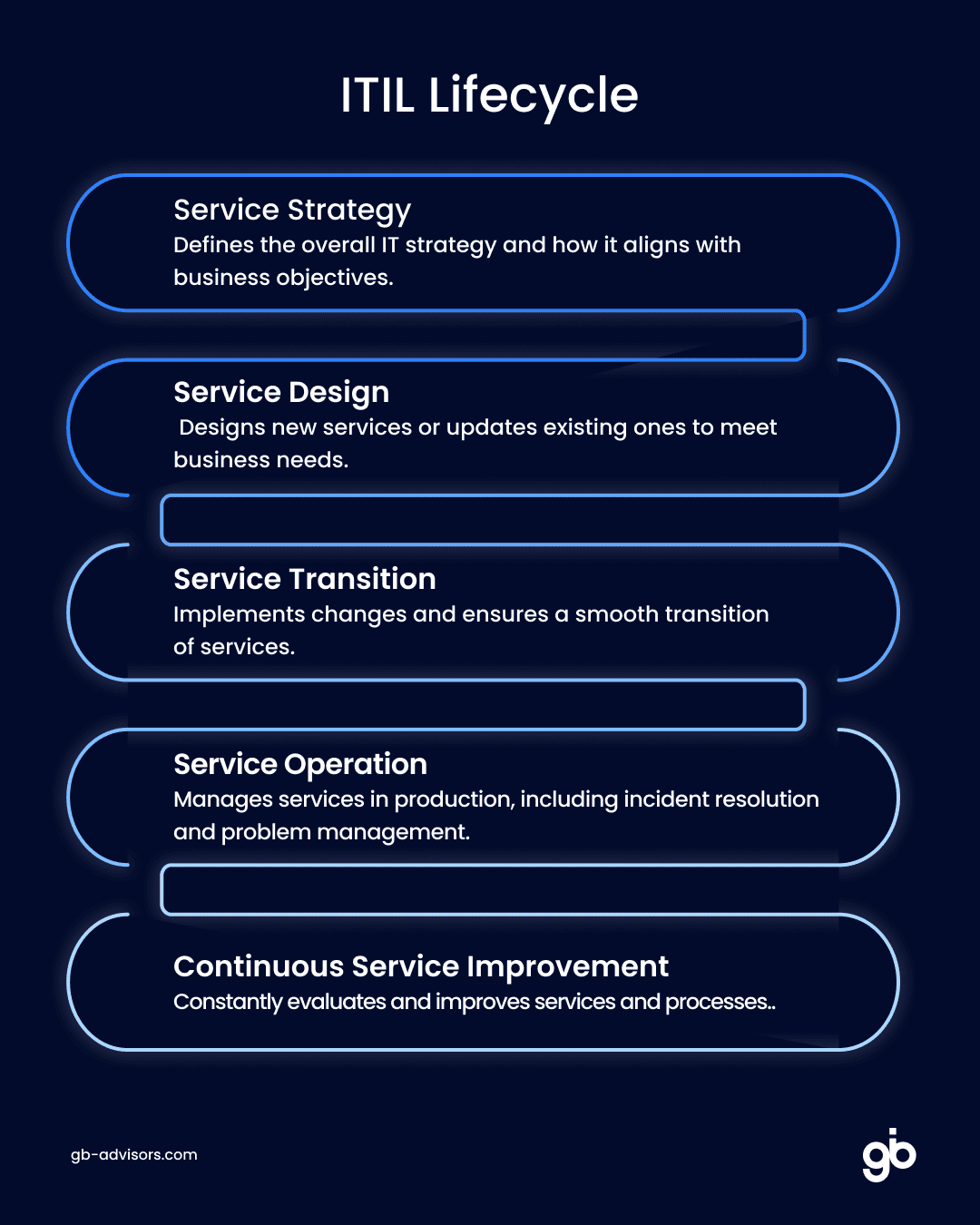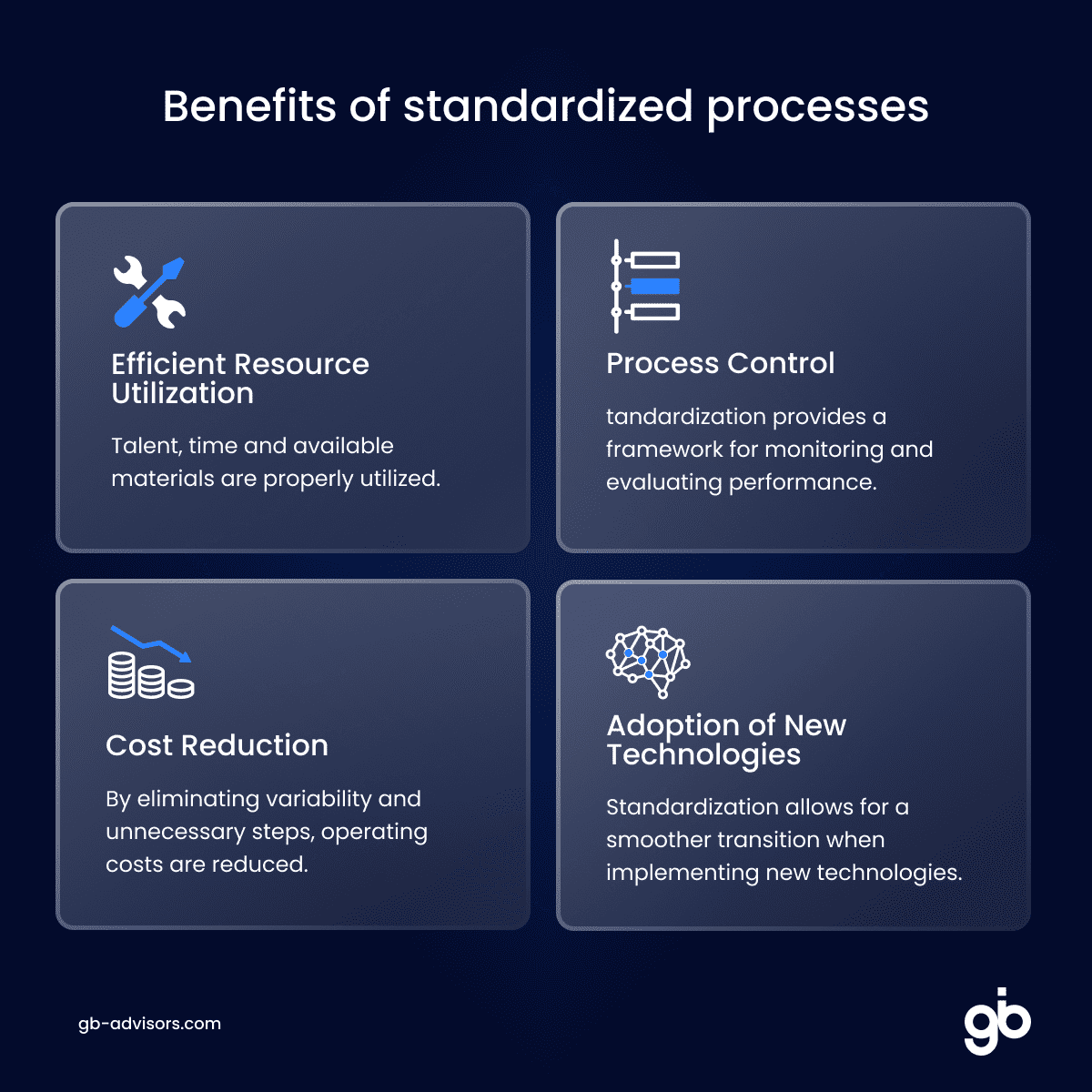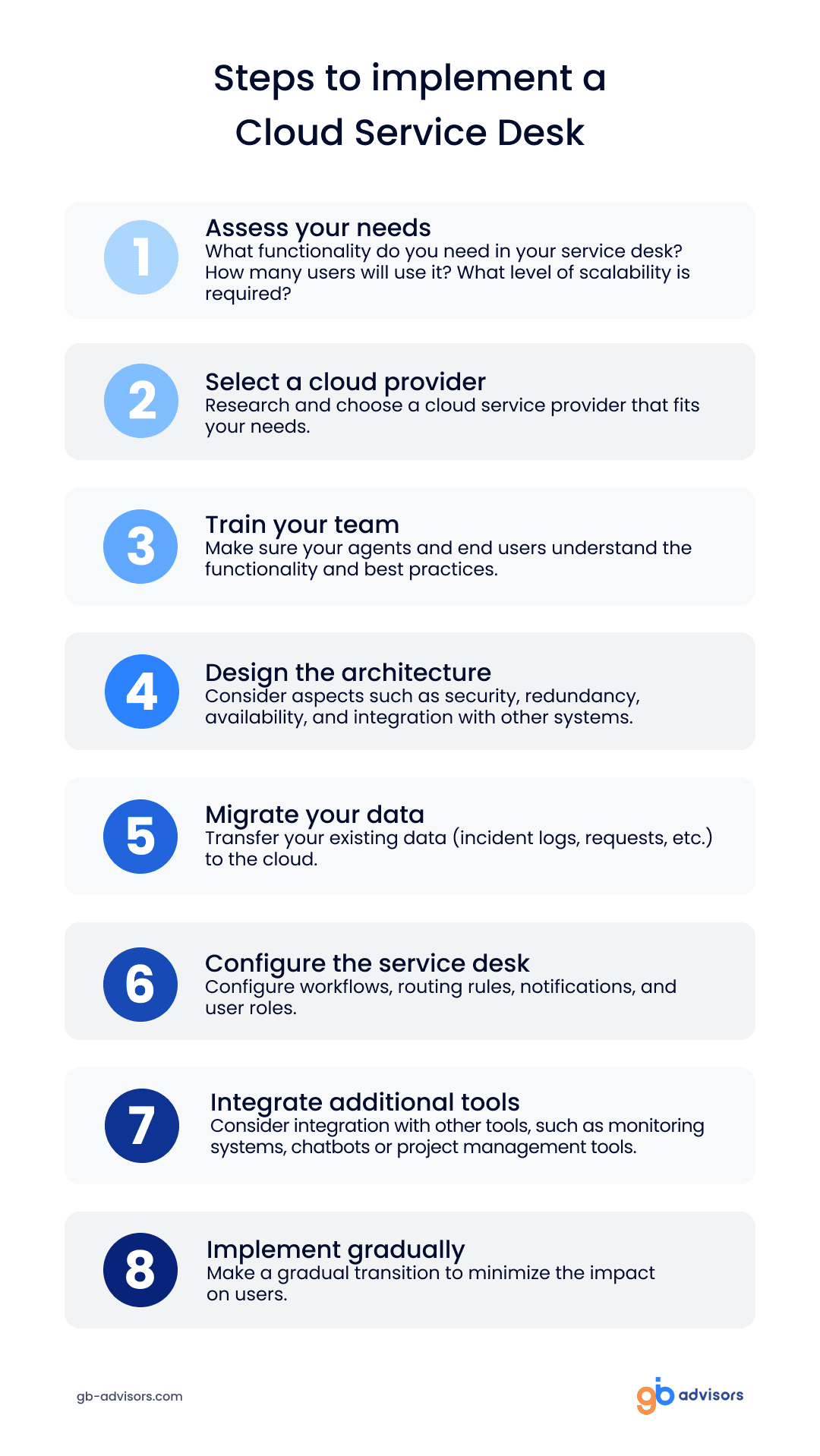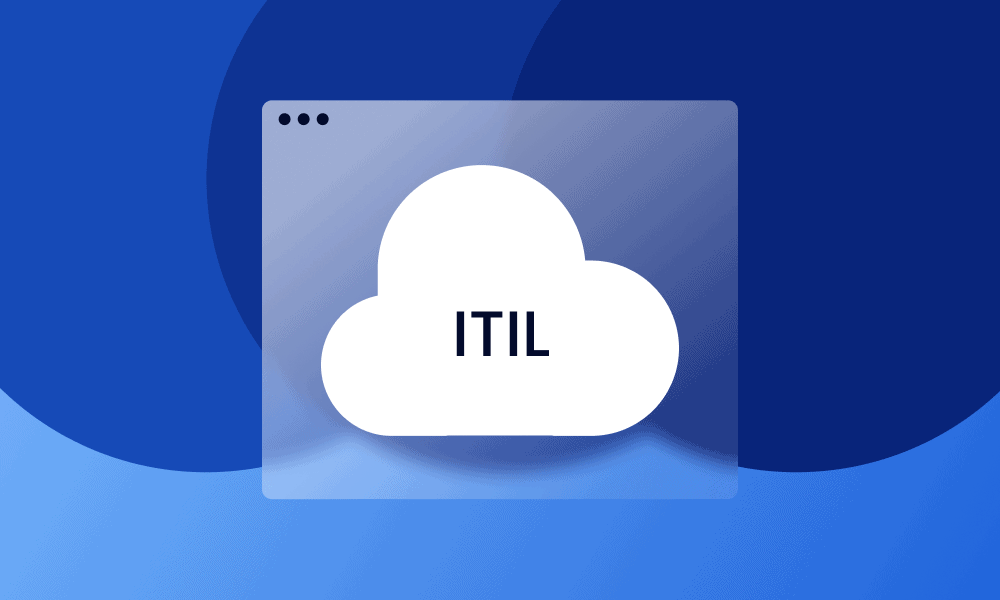In the digital era we find ourselves, companies are constantly looking for ways to improve their efficiency and productivity. One of the most effective ways to do this is by implementing an ITIL service desk on cloud.
But why choose a cloud-based solution, and what advantages can it offer? This article will explore five key advantages of using an ITIL service desk on cloud. From improved performance to accessibility, security, and availability, and finally, scalability. Join us to understand how this tool can transform IT service management in your organization.
What is an ITIL Service Desk on Cloud?
Let’s start with the basics, in case we’re not all on the same page:
An ITIL service desk on cloud is a combination of two key concepts in IT service management: ITIL (Information Technology Infrastructure Library) and cloud computing.
ITIL is a set of best practices used for the development and execution of IT services. It provides a detailed framework for their management, with a focus on alignment and delivery of high-quality services that meet business needs.
On the other hand, the “cloud” refers to the delivery of IT services over the Internet, rather than through software installed only on your devices. This allows businesses to access applications and data from any location and device.
Therefore, an ITIL cloud service desk is an IT service management solution that is based on ITIL best practices and delivered through the cloud. Let’s take a look at the advantages of this below.
You may also be interested in reading the following articles:
Why does your company need a service desk?
Service Desk vs. Help Desk: In what ways are they different?
What are the benefits of ITIL?
In short, an ITIL service desk plays a crucial role in organizations by acting as the main point of contact between users, businesses, and partners.

Let’s take a look at some of its main advantages:
1 – Improved efficiency and productivity
The ITIL methodology allows companies to focus on what really matters. That is, to provide a quality service and meet the needs of its customers.
It provides guidelines for measuring and analyzing service performance. This helps identify opportunities to improve and optimize IT operations.
Performance indicators can include metrics such as:
- Average time to resolution.
- Problem resolution rate.
- Total cost of resolution per problem.
By managing support requests on a single, centralized platform, a deeper understanding of what is happening in the organization is achieved. This, in turn, facilitates issue prediction and allows for more effective preventative measures to be taken.
2 – Alignment with business needs
ITIL ensures that IT services effectively support business objectives. By prioritizing the delivery of value, it enables every technology investment to contribute directly to business success.
For example, ITIL proposes the implementation of a service catalog. This is a detailed list of all IT services offered by the company. Such a catalog helps stakeholders understand:
- What services are available?
- How they can benefit from them.
- And how these services support business objectives.
3 – Improved customer satisfaction
A company that adopts a methodology such as ITIL is positioned to offer superior service, thanks to its solid structure and efficient operations.
But we are not only referring to external customers; we also consider the company’s employees. By adopting ITIL, the company can provide effective technical support, an uninterrupted technology infrastructure, and clear, concise procedures for performing their daily tasks. This holistic approach improves not only customer satisfaction but also employee productivity and well-being.
ITIL also provides a framework for continuous service improvement, enabling the company to innovate and adapt to changing market needs. This ensures a competitive advantage and promotes sustained long-term growth.
4 – Improved risk management
ITIL provides a framework for identifying, assessing, and managing IT risks, which can help prevent problems before they occur.
In fact, risk management is a key consideration in many aspects of ITIL. From change and incident management to capacity and availability planning.
This process in ITIL is designed to be iterative. That is, you learn from each cycle and use that learning to improve future processes.
5 – Standardized service delivery
As we have already seen, ITIL defines clear processes for all areas of IT service management, from incident and problem management to change management and capacity management.
These standard processes help ensure that all issues are handled consistently and efficiently.
It also facilitates communication and collaboration between different parts of the organization. This is possible because it provides a common language and structure. Thus improving mutual understanding, reducing incidents, and fostering a culture of continuous improvement.

What are the advantages of an ITIL Service Desk on Cloud?
To better understand the advantages of service desks on cloud, we must take into account how they traditionally worked.
A traditional or on-premise service desk is a solution installed on a company’s internal servers. This means that only the employees responsible for the application have control over data security and privacy. Also, only the technicians working for the company can update and maintain the application, which is entirely manual.
Is there any advantage to this type of service desk? In general, some would argue that the advantage is that the company has full control of the application.
However, the cost and complexity of managing and maintaining the infrastructure is one of the main reasons that drove the migration of these systems to the cloud.
In contrast, cloud solutions are resilient to setbacks and are easy to maintain. Let’s take a closer look at some of their most important advantages:
1 – Cost-effectiveness
Cloud solutions are often more affordable because they do not require a large upfront investment in hardware and software. Instead, they are generally based on a subscription model, allowing companies to pay only for what they need and use.
Additionally, cloud solutions frequently have built-in backup systems. This helps protect against data loss and minimize downtime in the event of a system failure or disaster. Thus protecting the enterprise from serious losses.
2 – Scalability
It is highly scalable, meaning it can grow (or shrink) with the business. This is particularly useful for growing businesses or those with seasonal demand.
It also offers benefits over changes to any service or element that may impact your IT services. For example, if a change is initiated to replace an old server that is failing with a new one, the technology is able to help you implement the change securely. So you can assess the risks, implement safely, and verify the results upon completion.
3 – Remote access
Support staff can access service desk systems from anywhere with an internet connection. This is one of the reasons why remote work, post-pandemic, proved to be as effective as working in the office, if not more so.
People do not need to have specific hardware to be able to do their work. Instead, they can access applications and their work tools easily.
4 – Automatic updates
Cloud service providers usually take care of system updates and maintenance. This frees up company time and resources to focus on other areas of the business.
Moreover, not only are updates automatic in SaaS (Software as a Service) services, but these tools have robust automation of manual processes. More recently, they have benefited from the potential of Generative AI.
5 – Rapid implementation
Cloud solutions can be implemented in a matter of hours or days. This means that companies can start benefiting from their technology investments much sooner.
For these reasons, the learning curve for employees is lower compared to traditional service desks. If the software vendor has software security services, you can be sure that they will help you learn what you need. And so you can get the platform up and running quickly (depending, of course, on the size of the solution and the company itself).

Conclusion
In summary, adopting an ITIL Service Desk on Cloud offers a number of significant benefits for organizations. From centralization of requests to scalability and continuous improvement, this strategic combination drives operational efficiency and ensures an exceptional user experience.
If you’re looking to optimize your IT services, the cloud and ITIL best practices are the way to go. Need guidance with that? Contact us and let us assist you.



